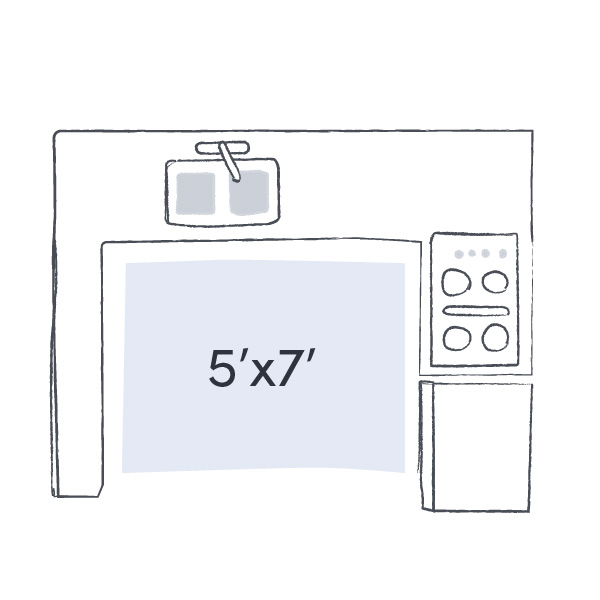The kitchen might not be the first place you’d think to put that rug you love. But trust us, a rug in the kitchen might be just the thing to make your dining area look more put together. And even though spills of red wine, grease, and crumbs can be hazardous to textiles in the kitchen, having a rug there has many benefits.
They add a little cushioning underfoot in a room where you spend a lot of time on your feet and are a great way to add color to a kitchen with neutral tones. Additionally, cleaning is simple because you can now purchase machine-washable rugs from a number of our favorite home retailers. What do you think—should there be a rug in the kitchen?
Here are some of our favorite examples of the style, which incorporates various rugs in various kitchens.
A chic rug adds depth and interest to a kitchen that is otherwise black and white. This will demonstrate it to you as the burnt orange rug draws your attention away from the far-off greenery and the dark cabinetry. Observe how the rug’s color complements the shelves’ natural wood tone as well.
Rug Size for a Medium-Size Kitchen
(100 to 200 square feet)

If you have a medium-size kitchen, depending on your kitchen layout, a smaller rug, like a 5’x7’, 3’x5’, or a 2.5’x7’ kitchen runner might work best, leaving the rest of the floor space open.
Same if you’re getting a rug to fill the space. A good rule of thumb is that the area of the rug under a dining table should be the table’s size plus three feet on all sides to keep the chairs on the rug when you move them in and out.
If you just need pattern, pick one in the colors already in your kitchen, but with a graphic design; the beauty of a rug is that it’s a relatively low-investment way to change the appearance of the space. If you need an injection of color, go wild. In terms of style, you can select an item that perfectly matches the theme or provides a contrast (for example, a casual rug in a more formal kitchen) to steer the room in a different direction. A lighter-hued, solid-color rug is the one thing I would advise against buying because it will show stains more readily than a rug with a darker color or pattern.
Wool is one of the easier natural weaves to spot clean, and natural fibers like sisal or jute are also resilient and can be spot-cleaned, but each will need more maintenance than a polypropylene rug. Before purchasing a rug, be sure to read the care instructions to make sure you’re willing to put in the work.
First step: Measure your space. Standard rectangular mats for use in front of sinks are 2 feet by 3 feet, but if you want more coverage, you can tile them. If you want a runner, measure the length of the galley and deduct a few inches on the sides (at least three, ideal, but more like six) to leave space between the cabinets and the rug.
Because the area is so prone to spills and messes, it may seem counterintuitive to some people, but if you choose the right kind of rug, it can improve the area without increasing your workload. Here’s what you should consider.
What Type of Rug Is Best for the Kitchen?
An indoor/outdoor rug is the best kind to use in the kitchen. Since it is made of polypropylene, this rug is stain and moisture resistant. Polypropylene rugs are easy to clean as well as durable.
That said, if you find a design you cannot resist, you can also be bold and try out other types of rugs. If “design” is your top concern, you can think about an Oriental rug in addition to Jute or Cotton rugs. These rugs can really accentuate the look of your kitchen.
In terms of shape, anything works in this space. Based on the design of the cabinets, the kitchen has a lot of different uses. As a result, you can use runners, half-moon rugs, square rugs, or even round rugs in it and still have the interior design idea work.
